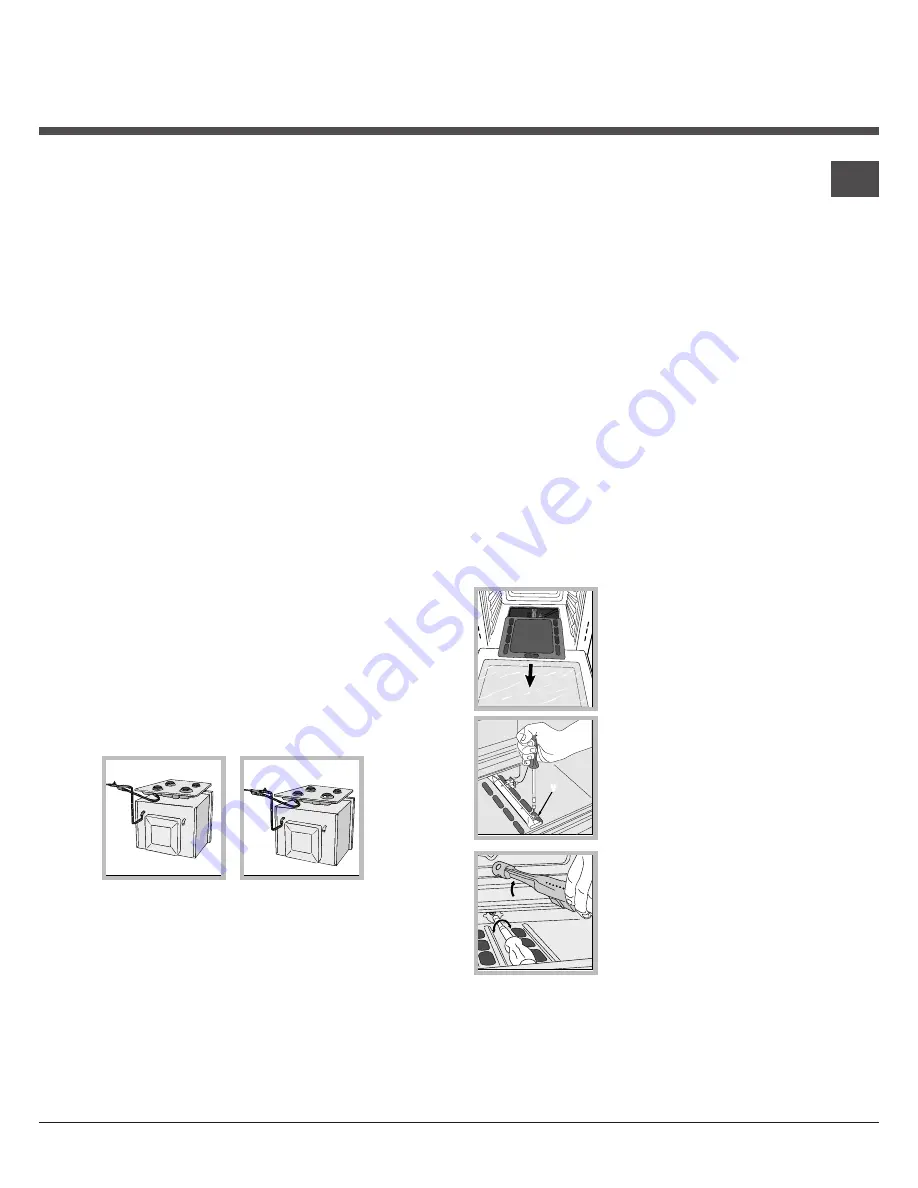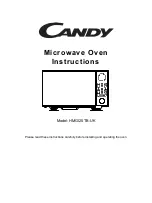
!
Once the appliance has been installed, the power
supply cable and the electrical socket must be easily
accessible.
!
The cable must not be bent or compressed.
!
The cable must be checked regularly and replaced
by authorised technicians only (see Assistance).
!
The manufacturer declines any liability should
these safety measures not be observed.
Gas connection
The appliance should be connected to the main
gas supply or to a gas cylinder in compliance with
current National regulations. Before carrying out the
connection, make sure the cooker is compatible with
the gas supply you wish to use. If this is not the case,
follow the instructions indicated in the paragraph
“Adapting to different types of gas.”
When using liquid gas from a cylinder, install a
pressure regulator that complies with current National
regulations.
!
Check that the pressure of the gas supply is
consistent with the values indicated in Table 1 (“Burner
and nozzle specifications”) since this will ensure the
safe operation and longevity of your appliance while
maintaining efficient energy consumption.
!
Should you need to install a gas hob on top of a
built-in gas oven, it is strictly forbidden to connect the
two or to use a single cut-off tap. The two appliances
should be connected separately, and each one should
have its own stop tap in order to make them completely
independent from one another (see figures).
Connection with a rigid pipe (copper or steel)
!
Connection to the gas system must be carried out in
such a way as not to place any strain of any kind on
the appliance.
There is an adjustable L-shaped pipe fitting on the
appliance supply ramp and this is fitted with a seal in
order to prevent leaks. The seal must always be replaced
after rotating the pipe fitting (the seal is provided with the
appliance). The gas supply pipe fitting is a threaded 1/2
gas cylindrical male attachment.
Connecting a flexible jointless stainless steel pipe
to a threaded attachment
The gas supply pipe fitting is a threaded 1/2 gas
cylindrical male attachment.
These pipes must be installed so that they are never
longer than 2000 mm when fully extended. Once
connection has been carried out, make sure that the
flexible metal pipe does not touch any moving parts
and is not compressed.
!
Only use pipes and seals that comply with current
National regulations.
Checking the tightness of the connection
!
When installation has been completed, check the
pipe fittings for leaks using a soapy solution. Never use
a flame.
Adapting to different types of gas
In order to adapt the oven to a type of gas other than
the type for which it was manufactured (indicated on
the label), follow these simple steps:
• Replacing the oven burner nozzle
1. Open the oven door fully.
2. Slide out the bottom of the
oven.
3. Unscrew the burner fastening
screws.
4. Remove screw “
V
” and then
the oven burner.
5. Unscrew the oven burner
nozzle using the special socket
spanner for the nozzles, or
better still a 7 mm socket
spanner, and replace it with a
nozzle suited to the new type of
gas (see Table 1).
6. Replace all the parts, following the steps described
above in the reverse order.
!
Take particular care when handling the spark plug
wires and the thermocouple pipes.
NO
OK
V
GB
5






































